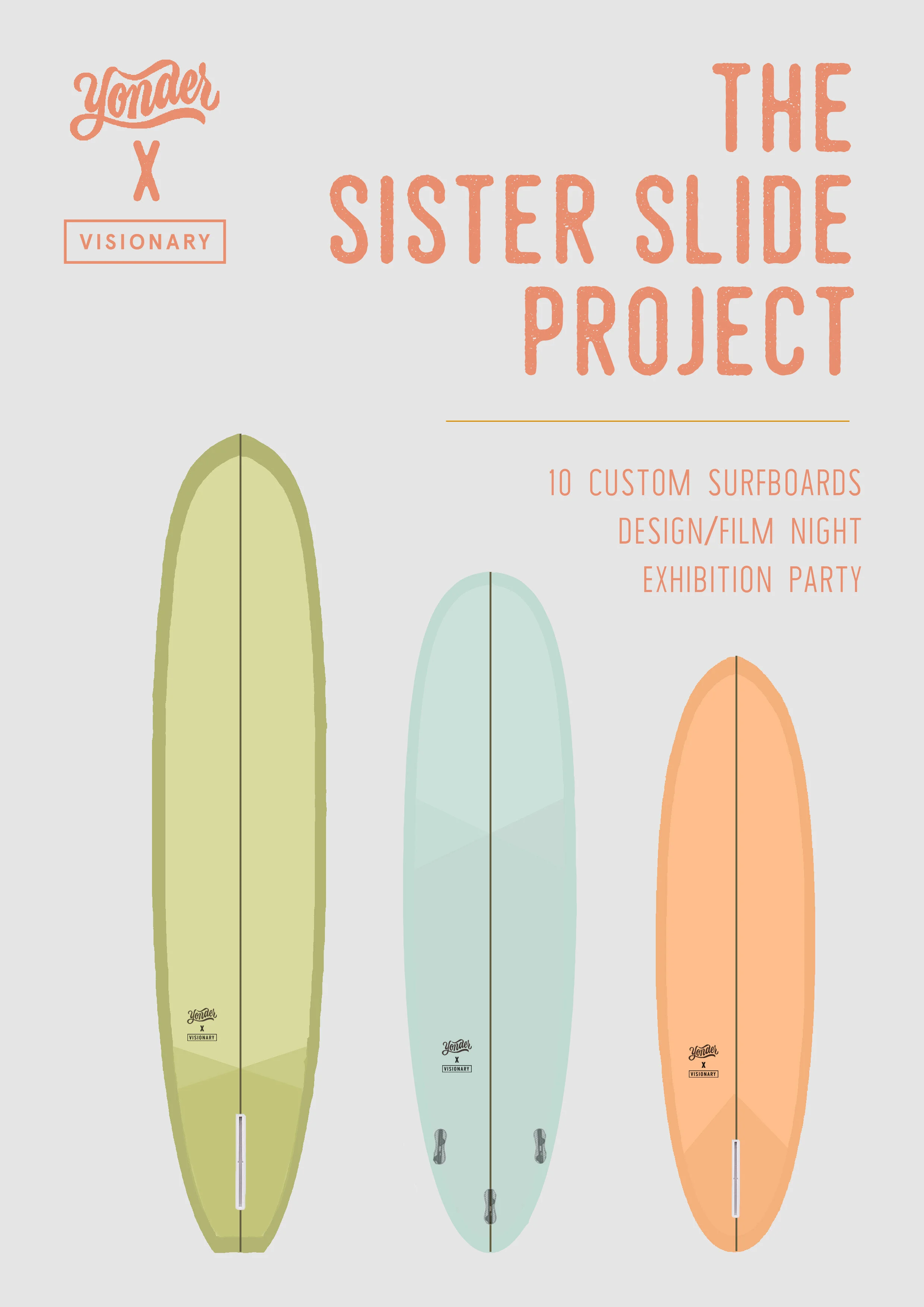Buying a Surfboard
OK, it’s a bit of an investment to lay out when you start surfing. A good wetsuit is between £250-350, decent boots, good mitts, a board, a board bag, fins, a leash, a changing robe…
Fast forward over a decade for us and we have around ten personal surfboards in the garage, wetsuits for each season, a collection of fins, countless leashes and various sized travel bags for different sized boards and purposes. It wasn’t that we saved up for all this stuff, we just sort of accumulated it over the years. It happens. But we started at the beginning and learned lessons along the way. I’m pleased to say that most boards we still own have stood the test of time and are either still being surfed by myself or Tom or have been passed on to others to surf.
I officially started surfing on a Tunnel Vision 7’6 Mini Mal, bought brand new from a shop in Newquay. It was the best start I think I could have had, the folks in the shop were really helpful and gave some great advice. I think I paid about £350 for it over ten years ago and I remember selling it for £250 when I was finished with it two or three years later.
I want to lay out some of my experience with buying surfboards to help to make the process of investing a little easier hopefully.
Types of Boards -
This is a very general overview as a guide -
Shortboard - 5’5 - 6’8ish for high performance surfing, radical turns, steeper waves etc.
Fish - 5’4 - 6’2ish. Two fins, wide outline, swallowtail. Fast, loose, hard so surf but very fun. More fluid style than a traditional shortboard.
Midlength - these come in all shapes and sizes but generally between 6”10 - 8”. A refined and more serious shape of board for fluid, stylish surfing. Different from a mini-mal.
Mini-mal - Beginners board, elements of a longboard and shortboard. Around 7”2 - 8”. Best starting point for a beginner.
Longboard - 9’0 - 10’0 roughly. There are two distinct types, very important. Performance longboard, often called a performance ‘mal’. Mal being short for Malibu (same with Mini-Mal) and Traditional Longboard (log). Performance Mals have three fins, loads of rocker and aren’t for the beautiful graceful longboarding we love.
That is a very short summary, there is loads more to it.
A word on foamies…
Foamies are great, we love them. We use 8’ Swell boards at Yonder, they’re around £300 each inc VAT plus shipping but you can pick up a foamie new from Decathlon or somewhere for around £150. That’s great, go and buy one, they’re fun!
However…if you want to progress with your surfing, start getting out back and learning to catch green waves and going ‘down the line’ in trim, a foamie is going to seriously hold you back for a number of reasons.
The main one being that the rails (edge of a board) on a lot of cheap foamies are square - they have a flat sheet of plastic bonded at 90 degrees to the foam on top. This is an issue when trying to surf properly. Imagine you are doing the washing up…stay with me here. You run a spoon under a tap, the shape of th eback of the spoon manipulates the water and makes it bend, right? When you run a knife under a tap, the water hits the knife and shoots off. Try it. Thats the basic principle of rail design; a rounded, 50:50 rail will manipulate the water and hold your board in the face of the wave. A sharp rail will release and skid down the face of the wave - especially if it’s really buoyant. Surfboards have a nice soft rail towards the front for hold and then a sharper rail towards the tail for release through turns. Also there are the following factors to consider…
Fin Flex - its hard to turn a board when the plastic fins are bent at 45 degrees and not helping you to turn.
Buoyancy - foamies are really buoyant, this makes it really hard to get out beyond the breaking waves; they’re designed to catch anything and everything. This is good in the white water as a beginner, but hard as you want to improve. They also sit really high on the water and it is really hard to ‘engage a rail’ to learn to turn and trim down a wave.
Pivot - It’s really hard to shift weight forward and backwards and make the micro adjustments needed to catch waves properly when a board is as buoyant as a foamie. The weight of our heads and shoulders is vitally important when catching waves in influencing the angle of a board on take-off - you will find it harder to catch green waves on a foamie as a result of not being able to influence the front-to-back pivot of the board due to buoyancy.
These inherent flaws in foamies are what makes them fun when you get a lot better at surfing; but for an improver looking to master green waves, I would steer clear.
Pop Outs…
Bic, NSP, Torq and the rest. Cost £250-400.
These are plasticky, mass produced boards from huge factories. They are a hard plastic shell in a two-part construction filled with foam. Some will last an apocalypse, some will start to loose their rocker very quickly (the front-to-back bend vital in a surfboard). Either way, they’re cheap for a reason. They are closer linked to toys than actual surfboards and are not designed with surfers in mind; the shapes are generally terrible and they float horribly on the water. If a shop tries to sell you one of these, they are thinking about their bank balance not your longevity as a surfer.
Please, please avoid these boards.
Epoxy construction boards.
Surftech, Tufflite, X-Lite etc. Cost -£300-1000
Personally, I’d avoid anything with these types of construction. They’re tough, light and readily available but they are mass produced in far eastern factories with low quality control and to be honest, they just kind of surf a bit weirdly. They’re a way for big companies to licence out their shapes and names to be mass produced and sold on a scale much bigger than traditional shaping factories.
Real Surfboards.
Cost - £400-1500+
Hand or machine shaped, doesn’t really matter as long as the board has been made from a core of polyurethane foam with a wooden ‘stringer’ (the line down the middle) and then glassed with a Polyester resin and fibreglass.
There are more environmentally friendly materials I am sure, but properly made and glassed well, these are in my opinion, the only boards to go for. That old Tunnel Vision that got me started in surfing was recently offered back to me, over a decade later. We have an old Chris Jones 7’0 in the garage that has been with us over a decade and we don’t know how long before that it was made and it is still as good today as it’s ever been.
Easy to fix, designed and shaped by a craftsperson and glassed by hand. The right weight, thickness and buoyancy for a surfboard. This is the old way and hard to beat. Get ‘em glassed heavy and they will outlast nearly anything and retain their re-sale value.
You can also get EPS/Epoxy construction hand shaped boards, they’re good. Lighter, tougher but a nightmare if you get a ding on a week-long trip. The second they get a small ding, they suck water in and need to be drained or dried before they’re fixed.
Personally, I think that a bit of weight in your board is a good thing too.
All the boards in our garage are PU/PE boards shaped by either Visionary, K&K, Empire or Polymath surfboards, except a couple of wood-skinned EPS/Epoxy boards made beautifully by Polymath and one Mini-simmons I shaped years ago.
We have bought a number second hand boards, a firm favourite being the 7” Chris Jones single fin that we acquired over twelve years ago. Second hand boards are a great idea but a good second hand board holds its value so always bare that in mind, a cheap board either way is probably cheap for a reason.
You can find out more about out upcoming ‘Sister Slide Project’ here…






